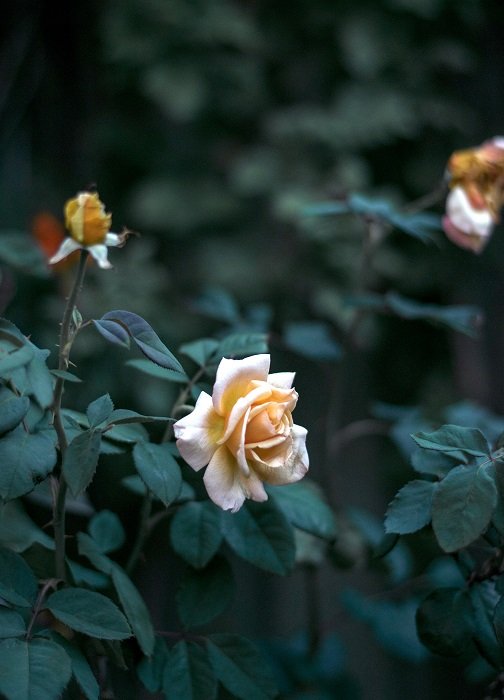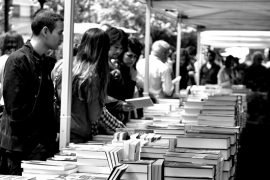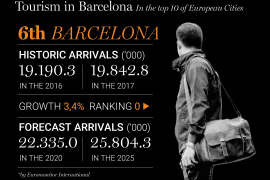While the previous article revolved around bulbs, orchids and jasmines, roses deserve a special chapter of their own. The rose can be considered as the Queen of the flowers. Roses are the flowers with the longest tradition and undoubtedly the ones with more love and disaffection stories into their fold, from ancient times to romanticism; from the dawn of modern conscience in Europe to the ambivalent conception of love, that still predominates nowadays, consisting in reasonable sentimentalism and alternating between disenchantment and the necessity to believe in eternal love. It is just natural to assume that this is the most frequent flower alluded to in poems. In verses attributed to Sappho, between 7th and 6th BC, the rose is considered as the favourite flower of none other than Zeus. For the Latins, the rose is the protagonist of the most celebrated incentive to squeeze the time out of our lives, commonly known as carpe diem. A popular poem by Ausonius, well into the 4th century of our era, opens up with the following warning line Collige, virgo, rosas: “Gather, virgin, ye roses while ye may” (and continues: “while youth is with the rose and thee, pluck thou the rose”). This invitation has often been interpreted nowadays as carte blanche, a validating go-ahead of immoderate attitude to life.
A chronological jump forward, Roman de la Rose –one of the best-selling medieval novels– outlined allegorically the link of this flower to the most delicate and exemplary code of behaviour: courtly love. This paradigm evolved over the centuries to the point of love-passion, that different romanticisms formulated in poetic terms or using the confluence of arts, like in the case of Wagner’s Tristan. This extreme form of death in life, or the vital blend that leads to the disappearance of its protagonists through erotic desire, can be identified and glorified in the symbol of the rose, by many poets from William Blake to Charles Baudelaire, whom we owe the following quote: “L’amour est une rose, chaque pétale une illusion, chaque épine un réalité” (Love is a rose, each petal an illusion, each thorn a reality). Certainly, the fact that this anthologically perfect flower –of the most exquisite scent and texture– is armed with its no less anthological thorns and can shed blood from the unwary or hasty lover, is a highly significant coincidence. The opposite phenomenon applies to the apparently deterrent cactus, in that it blooms generously and displays striking nuances.
Nonetheless, we know that one of the main desires of human beings is the ability to control significance and smooth off rough edges from discourse, as though feeling could grow in the absence of this type of unfavourable elements. We may interpret, in this respect, Juan Ramón Jiménez’s well-known interjection. We can picture him, tired, in search of appropriate adjectives to describe it perfectly, and he comes up with “don’t touch it anymore, this is what a rose is like”. Threatening sharp edges can, undoubtedly, create controversy regarding its immaculate reality: i.e. the thorns, or the “invisible worm” in Blake’s poem. Despite all this, roses are admired for their beauty, and the properties of their essential oils and fruit (rose hip) are the reason behind their use for health treatments or as guarantee of longer youth. Needless to say, roses shed their petals as time goes by, and their inevitable decay reveals the gloomy truth that love tries to transcend. Similar to what happens to all flowers, roses bring to light the ancient promise of eternity, the perpetuation of life. A life that begins with a drive, the impulse of attraction followed by carefulness, looking forward to the fruit.



















